

/en/access/introduction-to-objects/content/
Whenever you're learning a new program, it's important to familiarize yourself with the program window and the tools within it. Working with Access is no different. Knowing your way around the Access environment will make learning and using Access much easier.
In this lesson, you will familiarize yourself with the Access environment, including the Ribbon, Backstage view, Navigation pane, and Document Tabs bar. You will also learn how to navigate with a navigation form if your database includes one.
Watch the video below to learn more about getting started in Access.
Access uses the Ribbon to organize commands. If you're new to Access or have more experience with older versions, you should first take some time to become familiar with the Access interface.
Click the buttons in the interactive below to become familiar with the Access interface.
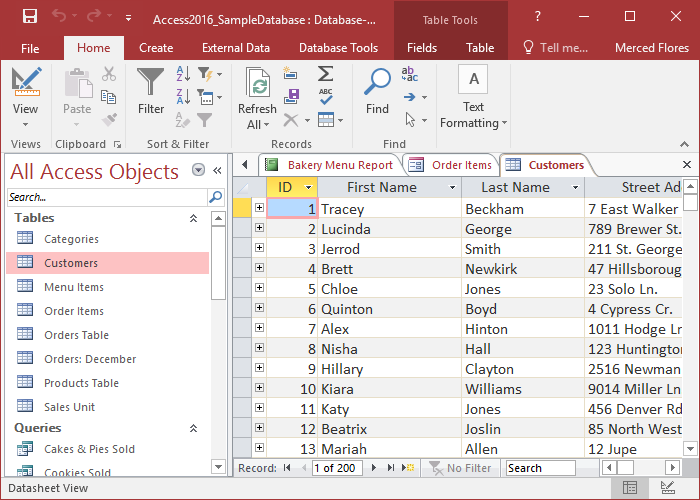
Access uses features like the Ribbon and the Quick Access Toolbar—where you will find commands to perform common tasks in Access—as well as Backstage view.
Access uses a tabbed Ribbon system instead of traditional menus. The Ribbon contains multiple tabs, each with several groups of commands. For example, the Clipboard group on the Home tab contains the Cut, Copy, and Paste commands.

Some groups also have a small arrow in the bottom-right corner that you can click for even more options.
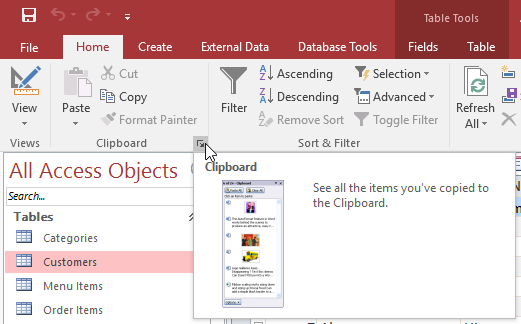
The Ribbon is designed to respond to your current task; however, you can choose to minimize the Ribbon if you find that it takes up too much screen space.
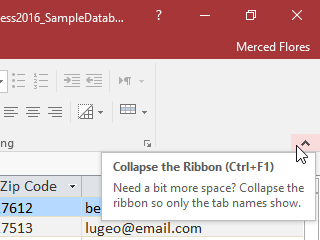
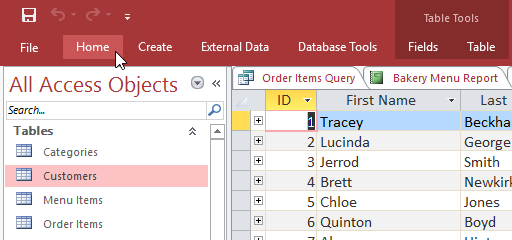
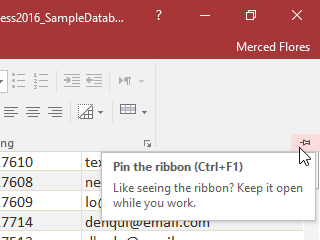
If you're having trouble finding a command you want, the Tell me feature can help. It works just like a regular search bar: Type what you're looking for, and a list of options will appear. You can then use the command directly from the menu without having to find it on the Ribbon.
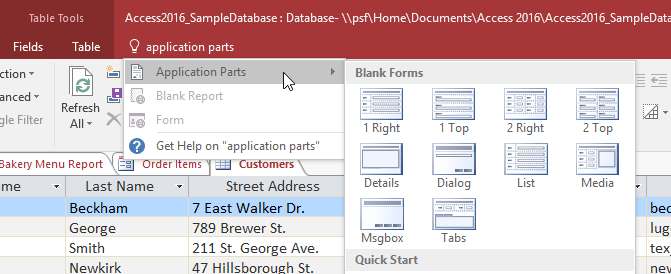
The Quick Access Toolbar, located above the Ribbon, lets you access common commands no matter which tab you are on. By default, it shows the Save, Undo, and Redo commands. If you want, you can customize it by adding additional commands.
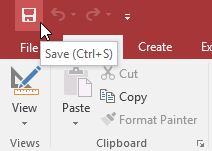
Note that the Save command only saves the current open object. In addition, the Undo command will not undo certain actions, like adding a record. Pay close attention to your information when using the Undo command to make sure it has the desired effect.
Backstage view gives you various options for saving, opening, and printing your database.
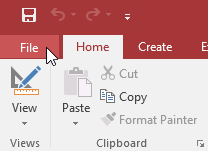
Click the buttons in the interactive below to learn more about using Backstage view.
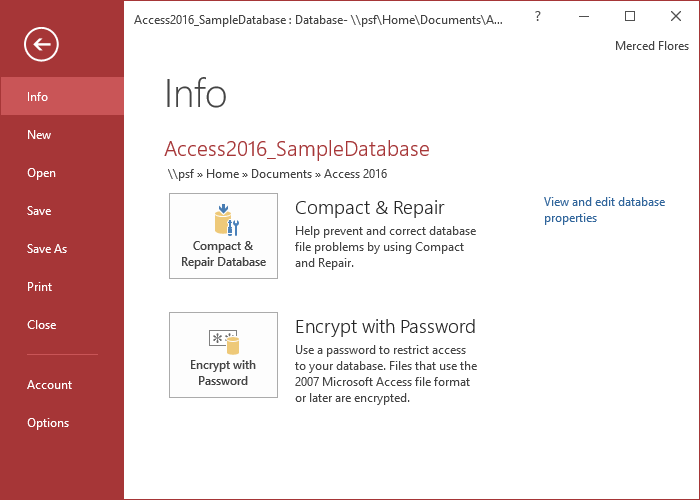
The Navigation pane is a list containing every object in your database. For easier viewing, the objects are organized into groups by type. You can open, rename, and delete objects using the Navigation pane.
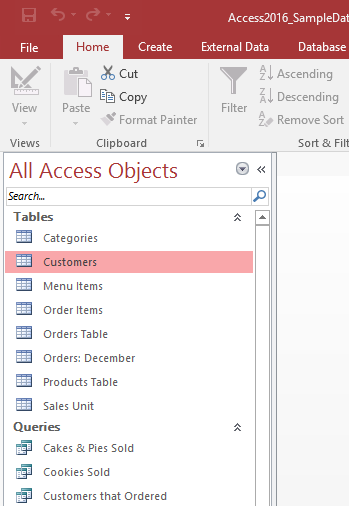
The Navigation pane is designed to help you manage all of your objects; however, if you feel that it takes up too much of your screen space, you can minimize it.
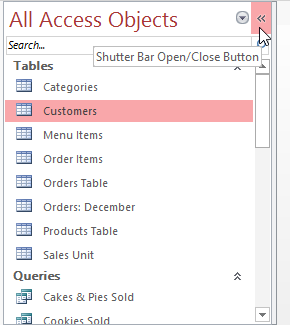
If you want to make the Navigation pane smaller without fully minimizing it, you can resize it. Simply click and drag the right border of the Navigation pane. When it is the desired size, release your mouse.
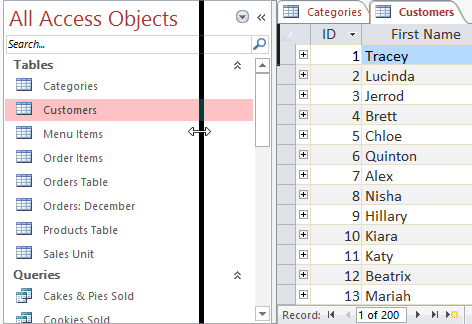
By default, objects are sorted by type, with tables in one group, forms in another, and so on. However, if you want you can sort the objects in the Navigation pane into groups of your choosing. There are four sort options:
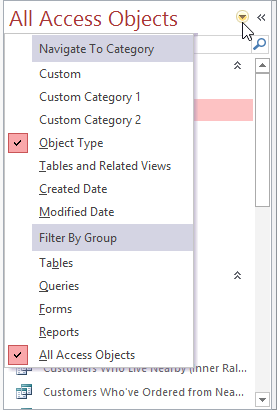
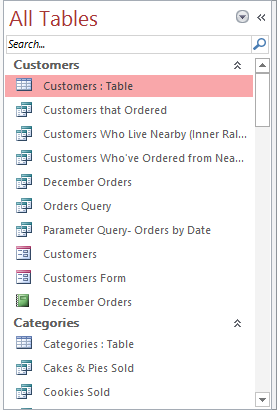
To further customize the appearance of the Navigation pane, you can minimize groups of objects you don't want to see. Simply click the upward double arrow next to the group name. To show a group, click the downward double arrow.
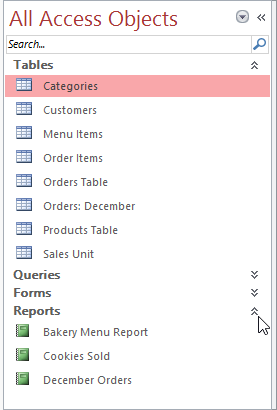
Some databases include a navigation form that opens automatically when the database is opened. Navigation forms are designed to be a user-friendly replacement of the Navigation pane. They contain tabs that allow you to view and work with common forms, queries, and reports. Having your frequently used objects available to you in one place lets you access them quickly and easily.
To open an object from a navigation form, click its tab. The object will be displayed within the navigation form. Once an object is open, you can work with it as you normally would. In the example below, the navigation form has tabs near the top-left for orders, customers, and menu items, and each one will open a corresponding object.
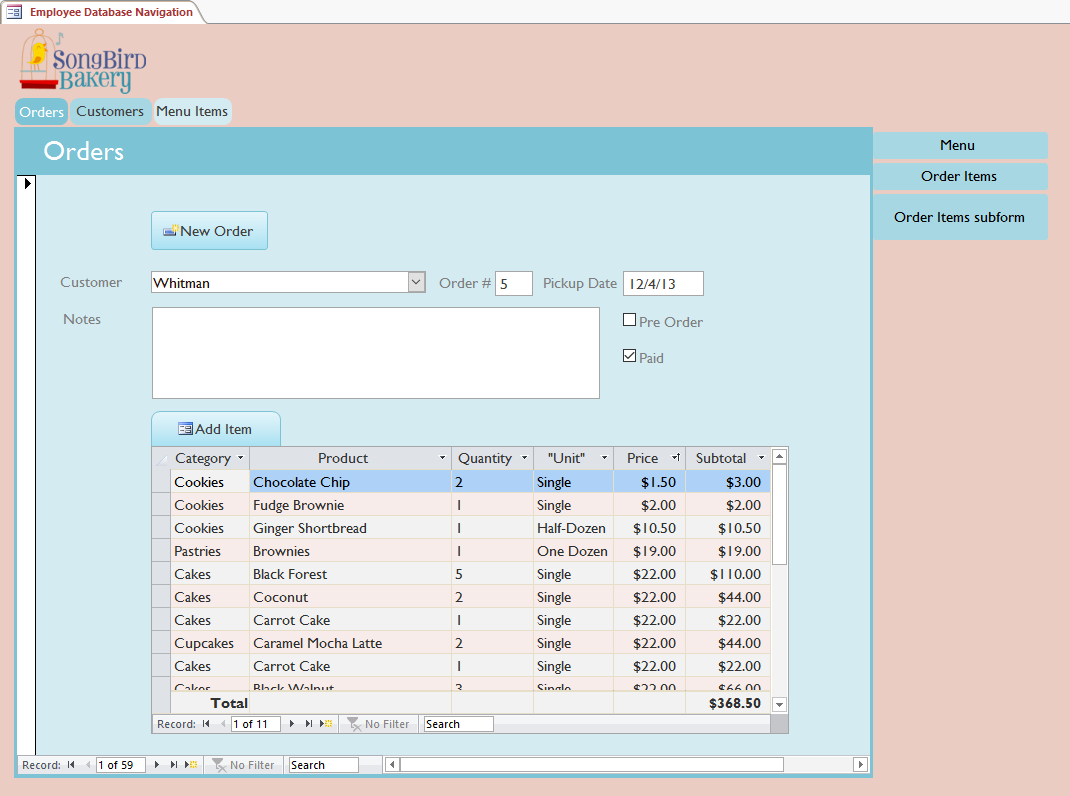
Generally, navigation forms include only the objects a typical user will need to work with fairly regularly, which is why your navigation form may not include every single form, query, or report. This makes it easier to navigate the database. By hiding tables and rarely used forms, queries, and reports, it also reduces the chance of the database being damaged by users accidentally editing or deleting necessary data.
For this reason, it's important to ask your database designer or administrator before working with objects that are not available in your navigation form. Once you have approval, you can simply maximize the Navigation pane and open the objects from there.
/en/access/managing-databases-and-objects/content/